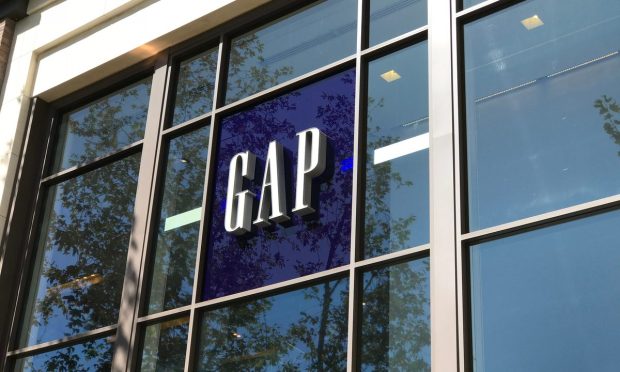Gap Leans on Multi-Brand Approach to Weather Supply Chain Issues

Supply chain constraints battered Gap Inc. in the third quarter, leading the apparel company to revise its projections for the fourth quarter as executives expect bottlenecks to persist into 2022.
Despite this, executives say they’re confident that the company’s portfolio of brands will help carry it through the short-term turmoil, with significant progress made on many of Gap’s core restructuring efforts.
CEO Sonia Syngal said Old Navy, Gap, Banana Republic and Athleta are each finding “new and relevant ways to expand reach and cut through to the consumer,” capitalizing on what makes them unique rather than being marketed primarily as a family of brands.
“We’re extending our customer reach across every age, body, and occasion from value to premium through category expansion and new addressable markets,” Syngal said.
She added that Gap Inc. also benefits from the ability to test and pilot initiatives in one brand and then “leverage learnings to scale across the rest.” For example, a strong Canadian presence for Old Navy, Gap and Banana Republic helped Athleta to quickly enter the market earlier this year; and inclusive sizing, first tested at Athleta, is now available at Old Navy as well.
“It’s the collective power of our brand that gives us scale advantage,” Syngal said. “We continue to innovate in sustainable sourcing with a focus on empowering women, enabling opportunity, and enriching community.”
Related: Gap Tackles ‘Fit Friction’ With Acquisition Of Virtual Try-On Company Drapr
Additionally, Gap Inc. has a partnership with Walmart on several collections of home goods and furnishings, which is helping the company extend its reach even further, as well as a collaboration with Kanye West’s Yeezy brand on a series of limited edition products. The most recent drop, the Perfect Hoodie, delivered the most sales by an item in a single day in Gap.com history, Syngal said, and over 70% of Yeezy Gap customers are shopping with Gap for the first time.
Authentic Brands Group (ABG), which earlier this week delayed its planned initial public offering after securing funding from two private equity and investment firms, is trying a similar approach, though on a much larger scale. At last count, ABG had acquired 44 different brands and labels, including those in media, fashion, wellness, home, active and outdoor lifestyle sectors, among others.
See also: Authentic Brands’ IPO Delay Won’t Slow Evolution of Retail Marketplace Aggregators
Gap Inc. has been working to make its business more streamlined and focused over the past year, closing unproductive North American stores, divesting from two smaller brands, and transitioning to a partner model in three European countries. Katrina O’Connell, chief financial officer of Gap Inc., told analysts on a conference call that “75% of the core restructuring of the company is largely behind us.”
“The next two years really are going to be about driving the optimization of that healthy core with … digitization efforts that we think will start to add value through inventory management, through lower return rates and through automation of some of our core processes to try and drive cost out,” O’Connell said.
In the third quarter, Gap Inc. said comparable sales increased 5% and net sales were down 1% compared to 2019 because of “significant supply chain constraints.” Online sales increased 48% on a two-year stack and now account for 38% of total sales.
Supply Chain Challenges
Syngal said that despite trying to plan for COVID-related factory closures in Vietnam and bottlenecks at ports around the world, “the shock to our business persisted longer than anticipated as weeks turned into months,” with Old Navy disproportionately impacted. Gap Inc. has now increased its utilization of airfreight ahead of the holiday season to try and ensure its brands can meet consumer demand.
Still, O’Connell said the supply chain disruptions and impacts to sales will likely persist throughout the fourth quarter and potentially into early next year, potentially causing Gap, Old Navy, Banana Republic and Athleta to lose out on sales if demand outpaces supply.
“As we reflect on the 18 months, I would say, I’d much rather have a supply problem than a demand problem,” Syngal said. “And on the demand side, we’ve been pleased with the response and the customer sentiment.”
